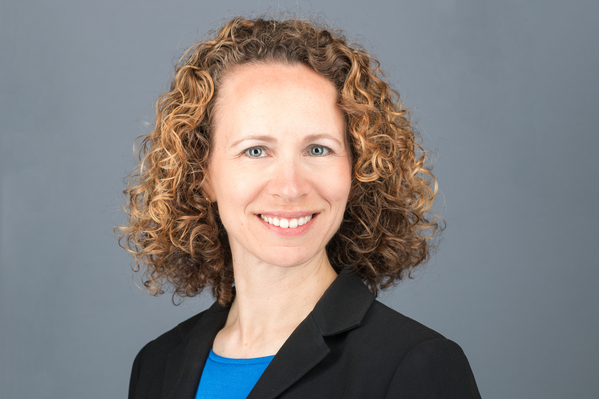Last November, the California Department of Managed Care gave its stamp of approval to a new version of Whole Child Assessment 2.0, a tool that screens for children’s adverse childhood experiences (ACEs). It was recommended as part of recently passed legislation calling for trauma screening for children in California.
But the Whole Child Assessment 2.0 (WCA) does more. It also queries patients about other critical safety and health issues, including whether they have enough to eat, whether there’s a gun in the house, and if there are people they can turn to in difficult times.

The WCA was developed by Loma Linda University pediatric provider Dr. Ariane Marie-Mitchell and colleagues. They are already using it in the Loma Linda's Pediatric Resident Clinic at SACHS in San Bernardino, a Federally Qualified Health Center that provides 10,000 well-child visits each year. It will be rolled out through the Loma Linda Medical system within the next month, and is now available for use by other clinicians.
The current version is the culmination of years of testing ways to identify children at high risk for or experiencing trauma, says Marie-Mitchell. But the WCA also streamlines a number of required screening questions into a single form.
“I wanted to make it possible for us to screen for trauma in the course of well-child visits," she says. "But what became clear was that the big challenge was feasibility. How do we make it work from the providers’ perspective. How do we make it work from a workflow perspective, but also [patients’] willingness to answer these questions?” (To learn more about the journey that led to WCA 1.0, see this ACEs Connection article.)
The result is a tool that screens for trauma, nutrition, sleep, dental care, and more, and allows clinicians to review the results with patients in a 15-minute visit, explains Marie-Mitchell. Why include all of those areas in a single form rather than using a separate screen for ACEs?
After a small pilot testing out a separate ACE screener in Rochester, New York, in 2010, combined with feedback from her peers, Marie-Mitchell says one great challenge she heard repeatedly was how difficult it is for clinicians to add on another separate screening tool to the existing assessments.
“For the purely practical reason of paper work, that was inconvenient,” says Marie-Mitchell, especially given the numerous state-required screens. Marie-Mitchell ticks off a dizzying list of California screens, including: the Stay Healthy Assessment; TB screening; child development screening, screening for depression in children 12 and older.
“It was not only complicated for parents, who are often coming in with more than one child, and now they have multiple pieces of paper and they’re trying to fill them all out,” says Marie-Mitchell. “But it was hard for the providers who then had to sit down and sort through all that paperwork and figure out what to talk about.”
The WCA 2.0, which is available in English and Spanish, is segmented into nine different versions for patients, based on age between birth and 20-years-old, according to the Loma Linda University website where it’s posted. For the youngest patients, the 32-question form begins with questions such as: Does your child go to daycare? Since the last visit has your child been hospitalized?And since last seen, “Have there been any changes or events that were stressful, scary or upsetting for your child?“
That question is followed by several rudimentary queries related to nutrition, household safety, dental health and sleep habits such as whether the baby is breast-fed or drinks formula, the number of wet diapers and bowel movements per day, and whether the child always sleeps on its back. ACE questions don’t appear until about half way through the form, which, says Marie-Mitchell, was intentional: “It’s a better rule of thumb to start with questions that are a little easier and put more sensitive questions at the end of a survey.”
To fine-tune the WCA 2.0 from its first iteration, Marie-Mitchell says that, after getting feedback from providers and patients, some of the wording of sensitive questions was changed in order to elicit a better response rate. “If we know that there’s approximately a 10% [rate] of domestic violence, and we’re getting 1% reported, we wanted to modify the question to see if we could get improved reporting.”
In WCA 1.0, there were several ways in which patients were asked about domestic violence. Based on the researchers assessment, however, they settled on one way of asking that patients were more inclined to answer, says Marie-Mitchell. The more nuanced version that’s also included in WCA 2.0 is a question that frames domestic violence in terms of the child’s experience, she explained. That question is:
Has your child ever seen or heard adults in the home pushing, hitting, kicking, OR physically threatening each other? (Because the results of their research are not yet published, Marie-Mitchell and her colleagues are unable to provide other specific examples of their findings at this time.)
From the first iteration of the WCA, Marie-Mitchell and her colleagues also realized that by providing “unsure” in addition to “yes” and “no” as a potential answer to many complicated questions, clinicians could find out more when reviewing the results with the families.
If one of their young patients discloses ACEs, clinicians are encouraged to find out if the ACE is something that's happening in their lives now, or occurred when they were younger. And as a rule, Marie-Mitchell says the first question she asks to learn more is an open-ended one, such as, “Can you tell me more about that?”
And Marie-Mitchell says the WCA 2.0 makes it easy for clinicians to review a patient’s history with them. Although anecdotal, she says her colleagues who are using the WCA 2.0 have one word to say about it.
“Relief!" she says. "They are so glad to reduce their paper work and to have a tool that asks questions that are meaningful to the care of their patients while fulfilling their documentation requirements.”
A recent visit she had with a patient shows how it works in practice. A 13-year-old came in with her father. With the father in the room, Marie-Mitchell asked about any health issues since the 13-year-old’s last visit. Then, alone with the teen, she reviewed the safety questions related to ACEs. The teen reported an ACE score of 8, irregular eating, headaches and stomach aches, nightmares, suicidality, bullying and she wasn’t doing well in school, says Marie-Mitchell.
She learned that the teen wasn’t in immediate harm or danger from the bullying, but provided an app developed by the Substance Abuse and Mental Health Services Administration to the girl and her father, mental health services for the family, recommended that the father and step-parent participate in the Nurturing Parenting program, and gave them handouts on ACEs, resilience and a guide to healing from trauma.
“The focus of my conversation with her and her father was about supporting healing from trauma," says Marie-Mitchell. "Based on her responses to lifestyle questions included in the WCA 2.0, I was able to counsel her on modifications to improve her overall health.”
Reflecting further, Marie-Mitchell says, “If I had not had the WCA or some other tool to screen for ACEs at this visit, I may have focused only on the father’s main concern of irregular eating.” Other assessments, she explains, might have revealed the school problems and suicidality, “but with the assistance of the WCA tool, I was able to identify in a brief amount of time some of the root causes. And that, I hope, will turn her life story in a positive direction.”




Comments (2)